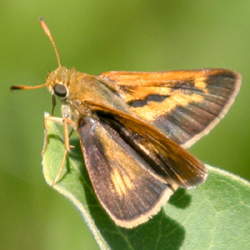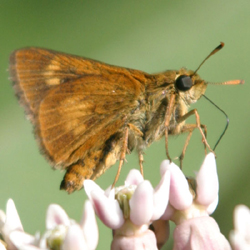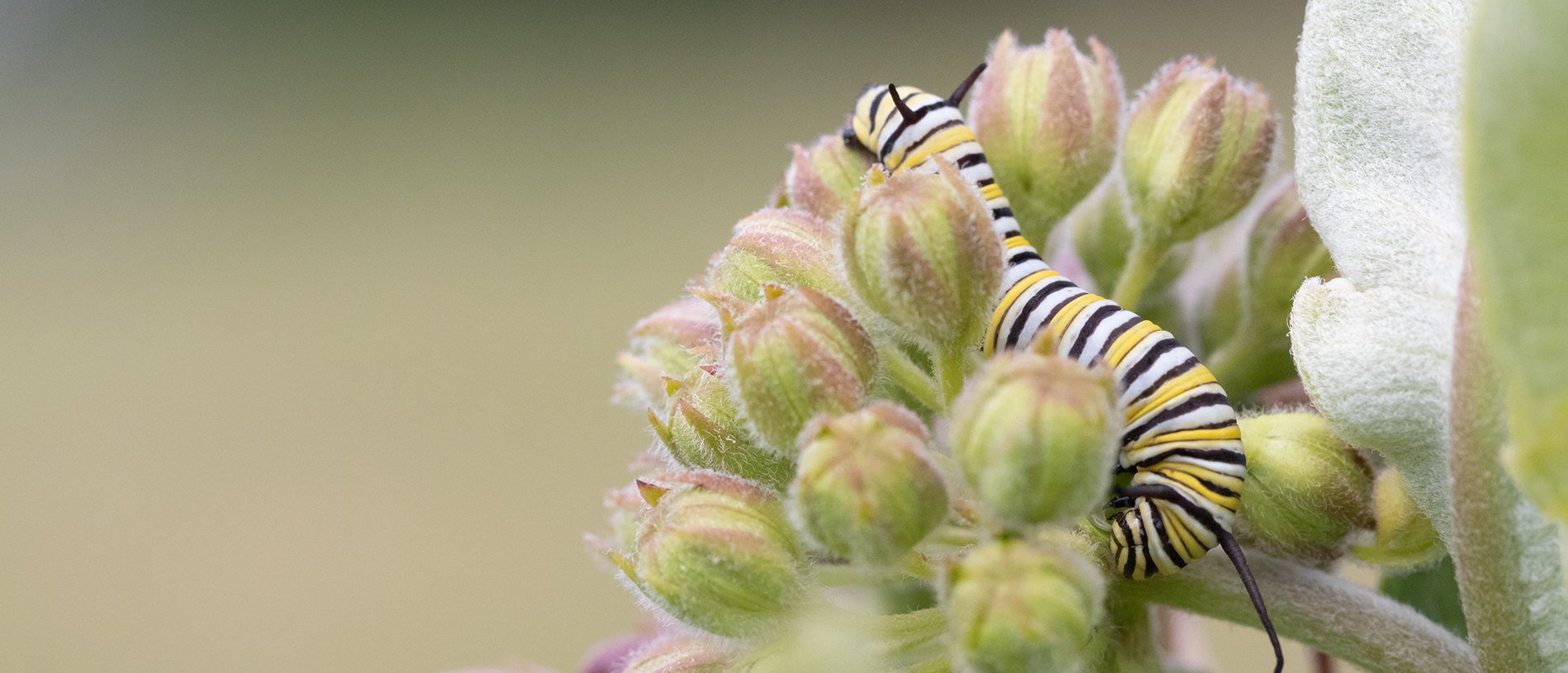Find a Butterfly
Black Dash
Euphyes conspicua
Named
Edwards, 1863

Identification
Wingspan: 1 - 1 and 3/8". This richly colored medium-sized skipper is perhaps best distinguished by its hindwing pattern: In both males and the dark females both above and below there is a distinctive vaguely diamond-shape patch of yellow surrounded by the much more extensive darker background. The forewing pattern above in males is dominated by a thick, sooty-black stigma under a patch of yellow. The female‘s forewing above has a bold crescent of yellow spots, some of them translucent. The Black Dash‘s close association with wetland habitats is another helpful clue to identification. Compare to rare Dion Skipper.
Distribution
Two populations: Southern Ontario, Minnesota, and eastern Nebraska around the southern periphery of the Great Lakes; southern New England south through eastern Pennsylvania, New Jersey, Maryland, and Virginia. Confined to southern New England but absent here in the southeastern regions including Cape Cod, much of Rhode Island, and southeastern Connecticut.
Status in Massachusetts
Curiously, Scudder (1889) reported Black Dash only from the Boston Metropolitan area. Atlas records indicate that this species is fairly common in much of eastern Massachusetts and uncommon, yet present, in widely scattered locales to the west. Maximum: 211 on 17 July 1993, Easton (Bristol Co.).

Flight Period in Massachusetts
One flight: Second week in July to early August. Extreme dates: 6 July 1989, Needham (Norfolk Co.), C. Arbogast and 10 August 1986, Sharon (Norfolk Co.), B. Cassie.
Larval Food Plants
Tussock-sedge (Carex stricta).
Adult Food sources
Found nectaring on 5 species of flowering plants by atlas workers. Both Common and Swamp milkweeds are frequently visited.

Habitat
Wetlands where its food plant occurs including marshy edges, river meadows, and bogs. Also nearby uplands with nectaring sources.
Life Cycle
The egg, larva, and pupa of this species have not been described.
Notes
During July, the Black Dash is regularly found with the Mulberry Wing (Poanes massasoit), and where you find one you will often find the other.
Account Author
Richard K. Walton



